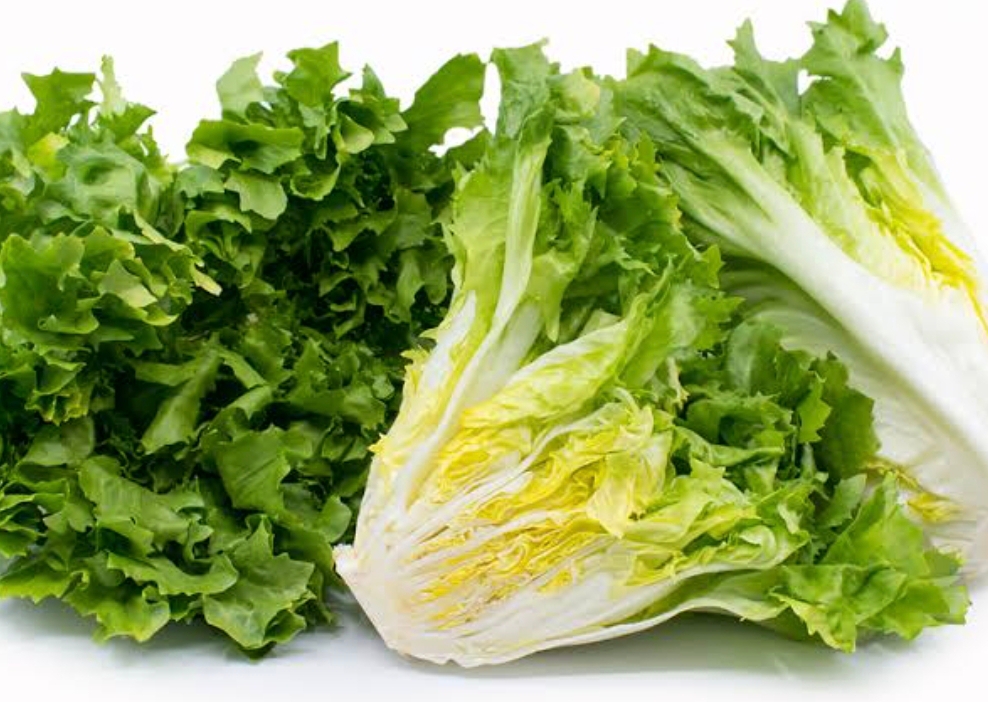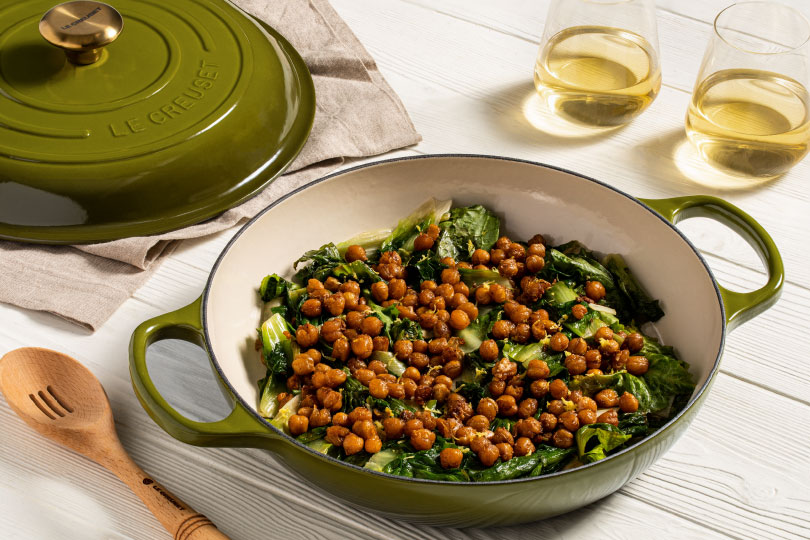Escarole, a leafy green vegetable with a slightly bitter taste, is not only delicious but also packed with essential nutrients that promote overall health. In this article, we’ll explore several detailed escarole recipes along with their health benefits and nutritional facts, allowing you to enjoy flavorful meals while nourishing your body.

Here are some recipes of Escarole
1. Escarole and White Bean Soup

Ingredients:
- 1 head escarole, chopped
- 1 can white beans, drained and rinsed
- 1 onion, diced
- 2 cloves garlic, minced
- 4 cups vegetable broth
- 1 can diced tomatoes
- 2 tablespoons olive oil
- Salt and pepper to taste
Instructions:
- Heat olive oil in a large pot over medium heat. Add diced onion and minced garlic, sauté until softened.
- Add chopped escarole to the pot and cook until wilted.
- Pour in vegetable broth, diced tomatoes, and drained white beans. Season with salt and pepper.
- Bring the soup to a simmer and let it cook for 20-25 minutes until flavors meld together.
- Serve hot and enjoy the comforting flavors of escarole and white bean soup.
Health Benefits:
- Escarole is rich in fiber, promoting digestive health and aiding in weight management.
- White beans provide a good source of plant-based protein, essential for muscle repair and growth.
- The combination of vegetables and beans in this soup offers a variety of vitamins, minerals, and antioxidants that support overall immunity and well-being.
Nutritional Facts:
- One serving of escarole and white bean soup (1 cup) contains approximately:
- Calories: 150
- Protein: 8g
- Carbohydrates: 20g
- Fat: 5g
- Fiber: 6g
2. Escarole and Orzo Salad
Ingredients:

- 1 cup orzo pasta, cooked and cooled
- 1 head escarole, thinly sliced
- 1 cup cherry tomatoes, halved
- 1 cucumber, diced
- 1/4 cup Kalamata olives, sliced
- 1/2 cup feta cheese, crumbled
- 2 tablespoons lemon juice
- 3 tablespoons olive oil
- 2 cloves garlic, minced
- 1 tablespoon fresh parsley, chopped
- 1 teaspoon dried oregano
- Salt and pepper to taste
Instructions:
- In a large bowl, combine cooked orzo, sliced escarole, halved cherry tomatoes, diced cucumber, sliced Kalamata olives, and crumbled feta cheese.
- In a small jar, combine lemon juice, olive oil, minced garlic, chopped parsley, dried oregano, salt, and pepper. Shake well to emulsify the dressing.
- Pour the dressing over the salad and toss until well coated.
- Serve chilled and garnish with additional parsley if desired.
Health Benefits:
- Escarole is low in calories and carbohydrates, making it an excellent choice for those watching their weight or blood sugar levels.
- Orzo provides complex carbohydrates for sustained energy and is a good source of B vitamins, essential for metabolism and energy production.
- The Mediterranean-inspired ingredients in this salad offer heart-healthy fats from olive oil and olives, along with antioxidants from tomatoes and fresh herbs.
Nutritional Facts:
- One serving of escarole and orzo salad (1 cup) contains approximately:
- Calories: 250
- Protein: 6g
- Carbohydrates: 30g
- Fat: 12g
- Fiber: 4g
3. Sautéed Escarole with Garlic and Lemon

Ingredients:
- 1 head escarole, chopped
- 2 cloves garlic, minced
- 2 tablespoons olive oil
- 1 tablespoon lemon juice
- 1/4 teaspoon red pepper flakes
- Salt and pepper to taste
Instructions:
- Heat olive oil in a large skillet over medium heat. Add minced garlic and sauté until fragrant.
- Add chopped escarole to the skillet and cook until wilted.
- Drizzle lemon juice over the escarole and sprinkle with red pepper flakes, salt, and pepper.
- Toss everything together until well combined and serve hot as a flavorful side dish.
Health Benefits:
- Garlic contains compounds with potent medicinal properties, including anti-inflammatory and immune-boosting effects.
- Lemon juice provides vitamin C, an antioxidant that supports immune function and collagen production.
- Red pepper flakes contain capsaicin, which may aid in weight loss by boosting metabolism and reducing appetite.
Nutritional Facts:
- One serving of sautéed escarole with garlic and lemon (1 cup) contains approximately:
- Calories: 100
- Protein: 2g
- Carbohydrates: 5g
- Fat: 8g
- Fiber: 3g
By incorporating these flavorful escarole recipes into your meal rotation, you can enjoy delicious and nutritious dishes that support your health and well-being. Whether you’re looking for a comforting soup, refreshing salad, or flavorful side dish, escarole offers endless possibilities for culinary creativity. So why not give these recipes a try and discover the delightful flavor and versatility of escarole in your own kitchen?
4. Escarole and Chickpea Stir-Fry

Ingredients:
- 1 head escarole, chopped
- 1 can chickpeas, drained and rinsed
- 1 bell pepper, thinly sliced
- 1 onion, diced
- 2 cloves garlic, minced
- 2 tablespoons soy sauce
- 1 tablespoon rice vinegar
- 1 teaspoon Sriracha sauce (optional)
- 1 tablespoon sesame oil
- Salt and pepper to taste
- Cooked brown rice or quinoa for serving
Instructions:
- Heat sesame oil in a large skillet over medium heat. Add diced onion and minced garlic, sauté until fragrant.
- Add sliced bell pepper to the skillet and cook until slightly softened.
- Add chopped escarole and drained chickpeas to the skillet, along with soy sauce, rice vinegar, and Sriracha sauce if using.
- Stir-fry everything together until the escarole is wilted and the chickpeas are heated through.
- Season with salt and pepper to taste.
- Serve the stir-fry over cooked brown rice or quinoa for a satisfying and nutritious meal.
Health Benefits:
- Chickpeas are an excellent source of plant-based protein and fiber, promoting satiety and aiding in digestion.
- Bell peppers are rich in vitamin C, which supports immune function and skin health.
- Sesame oil contains healthy fats and antioxidants that may reduce inflammation and improve heart health.
Nutritional Facts:
- One serving of escarole and chickpea stir-fry (1 cup) contains approximately:
- Calories: 200
- Protein: 8g
- Carbohydrates: 25g
- Fat: 8g
- Fiber: 6g
5. Escarole and Potato Gratin

Ingredients:
- 1 head escarole, blanched and chopped
- 4 potatoes, thinly sliced
- 1 cup Gruyere cheese, grated
- 1 cup heavy cream
- 2 cloves garlic, minced
- 1/2 teaspoon nutmeg
- Salt and pepper to taste
Instructions:
- Preheat oven to 375°F (190°C). Grease a baking dish with butter or olive oil.
- Layer thinly sliced potatoes in the bottom of the baking dish, followed by chopped escarole and grated Gruyere cheese.
- In a small saucepan, heat heavy cream with minced garlic and nutmeg until warm.
- Pour the warm cream mixture over the layers in the baking dish.
- Season with salt and pepper to taste.
- Cover the baking dish with aluminum foil and bake in the preheated oven for 45-50 minutes until the potatoes are tender.
- Remove the foil and bake for an additional 10-15 minutes until the top is golden brown and bubbly.
- Serve the escarole and potato gratin hot as a comforting and indulgent side dish.
Health Benefits:
- Potatoes are a good source of complex carbohydrates and potassium, which support energy production and cardiovascular health.
- Gruyere cheese provides calcium and protein, essential for bone health and muscle function.
- Nutmeg contains antioxidants and anti-inflammatory compounds that may offer various health benefits, including improved digestion and immune support.
Nutritional Facts:
- One serving of escarole and potato gratin (1 cup) contains approximately:
- Calories: 300
- Protein: 10g
- Carbohydrates: 20g
- Fat: 18g
- Fiber: 3g
Incorporating these delicious escarole recipes into your meal planning not only adds vibrant flavor to your dishes but also provides a range of health benefits from the nutritious ingredients. Whether you’re craving a comforting soup, a refreshing salad, or a hearty gratin, escarole offers endless possibilities for creating wholesome and satisfying meals. So why not give these recipes a try and discover the delightful flavor and versatility of escarole in your own kitchen.
Health Benefits of Escarole
Escarole, a leafy green vegetable, offers numerous health benefits due to its rich nutritional profile. Here are some of the key health benefits of including escarole in your diet:
- Rich in Vitamins and Minerals: Escarole is a good source of vitamins A, C, and K, as well as folate, potassium, and calcium. These vitamins and minerals play essential roles in various bodily functions, including immune support, bone health, and blood clotting.
- High in Fiber: Escarole is rich in dietary fiber, which promotes digestive health by regulating bowel movements, preventing constipation, and supporting a healthy gut microbiome. A diet high in fiber may also reduce the risk of chronic diseases such as heart disease, diabetes, and certain types of cancer.
- Antioxidant Properties: Escarole contains antioxidants such as beta-carotene, lutein, and zeaxanthin, which help neutralize harmful free radicals in the body and protect cells from damage. Antioxidants play a crucial role in reducing inflammation, supporting eye health, and lowering the risk of chronic diseases.
- Weight Management: Due to its high fiber content and low calorie density, escarole can help promote feelings of fullness and satiety, making it a valuable addition to weight management diets. By filling up on nutrient-dense foods like escarole, individuals can control their calorie intake while still meeting their nutritional needs.
- Heart Health: Consuming escarole as part of a balanced diet may help improve heart health by lowering cholesterol levels, reducing blood pressure, and decreasing inflammation in the body. The potassium content in escarole also supports heart function by regulating blood pressure and fluid balance.
- Blood Sugar Control: Escarole has a low glycemic index, meaning it does not cause a rapid increase in blood sugar levels after consumption. Including escarole in meals can help stabilize blood sugar levels and reduce the risk of insulin resistance and type 2 diabetes.
- Hydration: Escarole has a high water content, making it hydrating and refreshing. Proper hydration is essential for overall health and well-being, as it helps regulate body temperature, maintain electrolyte balance, and support various physiological processes.
Incorporating escarole into your diet can provide a wide range of health benefits, from supporting digestion and immune function to promoting heart health and weight management. Whether enjoyed raw in salads, cooked in soups and stir-fries, or baked in gratins, escarole offers delicious ways to enhance both the flavor and nutritional value of your meals. So why not make escarole a regular part of your culinary repertoire and reap the health rewards it has to offer.
Incorporating Escarole into Your Diet
Now that you’re aware of the numerous health benefits of escarole, let’s explore some creative ways to incorporate this versatile leafy green into your diet:
- Salads: Use raw escarole leaves as a base for salads. Combine chopped escarole with other fresh vegetables, fruits, nuts, seeds, and your favorite salad dressing for a refreshing and nutritious meal.
- Soups and Stews: Add chopped escarole to soups, stews, and broths for an extra boost of flavor and nutrition. Escarole pairs well with hearty ingredients like beans, potatoes, tomatoes, and sausage in comforting soup recipes.
- Stir-Fries: Sauté escarole with garlic, ginger, and other vegetables in a stir-fry for a quick and healthy meal. Serve the stir-fry over cooked rice, noodles, or quinoa for a satisfying and nutritious dish.
- Grilled or Roasted: Grill or roast whole heads of escarole for a unique and flavorful side dish. Drizzle with olive oil, sprinkle with salt and pepper, and cook until the leaves are slightly charred and tender. Serve as a tasty accompaniment to grilled meats or seafood.
- Sandwiches and Wraps: Use escarole leaves as a nutritious alternative to lettuce in sandwiches, wraps, and burgers. The slightly bitter flavor of escarole adds depth to sandwiches and complements savory fillings like deli meats, cheese, and roasted vegetables.
- Escarole Pesto: Blend raw escarole leaves with garlic, nuts, Parmesan cheese, and olive oil to make a delicious and vibrant pesto sauce. Use escarole pesto as a topping for pasta, pizza, bruschetta, or grilled meats for a burst of flavor.
- Escarole Chips: Bake escarole leaves in the oven until crispy to make healthy and flavorful escarole chips. Simply toss the leaves with olive oil, salt, and your favorite seasonings, then bake until crispy. Enjoy as a crunchy snack or serve as a unique garnish for soups and salads.
By incorporating escarole into your meals in these creative ways, you can enjoy its delicious flavor and reap its many health benefits. Whether you’re looking to boost your immune system, support digestive health, or simply add more variety to your diet, escarole is a nutritious and versatile ingredient that deserves a place on your plate. So why not start experimenting with escarole today and discover the endless culinary possibilities it has to offer.
Conclusion
In conclusion, escarole is a versatile and nutritious leafy green that deserves a place in any kitchen. From its health benefits to its culinary uses and even its potential in home gardening, there’s much to appreciate about this underrated vegetable.
Unique FAQs
- Q: Can I eat escarole raw? A: Yes, escarole can be enjoyed raw in salads or sandwiches for a crisp and slightly bitter flavor.
- Q: Is escarole the same as lettuce? A: While escarole may resemble lettuce, it has a slightly different taste and texture, with broader leaves and a mild bitterness compared to most lettuce varieties.
- Q: Can I cook escarole like spinach? A: Yes, escarole can be cooked similarly to spinach. It can be sautéed, steamed, or added to soups and stews for a nutritious boost.
- Q: Does escarole have any medicinal properties? A: While escarole is primarily valued for its nutritional content and culinary versatility, some traditional medicine practices suggest it may have digestive benefits and aid in detoxification.
- Q: Can I freeze escarole? A: While escarole is best enjoyed fresh, you can freeze it for later use. However, blanching it before freezing can help preserve its texture and flavor.
